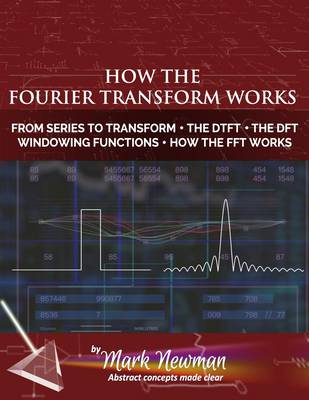
- Afhalen na 1 uur in een winkel met voorraad
- Gratis thuislevering in België vanaf € 30
- Ruim aanbod met 7 miljoen producten
- Afhalen na 1 uur in een winkel met voorraad
- Gratis thuislevering in België vanaf € 30
- Ruim aanbod met 7 miljoen producten
Zoeken
€ 29,45
+ 58 punten
Omschrijving
Fourier's discovery that it is possible to build complex signals out of basic sine waves revolutionized the way we look at data. It was years ahead of its time. In today's digital age, understanding the data we collect is vital. Fourier's idea is now in use more than ever before. In my last book: "How the Fourier Series Works" we studied Fourier's original theory, published in 1822. However, the Fourier Series can only model repeating signals. It took the further work of the German mathematician, Peter Gustav Lejeune Dirichlet, to expand the capabilities of the Fourier Series so that it could model non-repeating signals.
In this book, we'll follow the journey of the development of the Fourier Transform from Fourier's original idea, through Dirichlet's changes, and into the digital age of sampled signals, all the way to the Fast Fourier Transform that is used so widely today.
In this book, we'll follow the journey of the development of the Fourier Transform from Fourier's original idea, through Dirichlet's changes, and into the digital age of sampled signals, all the way to the Fast Fourier Transform that is used so widely today.
Specificaties
Betrokkenen
- Auteur(s):
- Uitgeverij:
Inhoud
- Aantal bladzijden:
- 114
- Taal:
- Engels
- Reeks:
- Reeksnummer:
- nr. 2
Eigenschappen
- Productcode (EAN):
- 9798373924030
- Verschijningsdatum:
- 18/01/2023
- Uitvoering:
- Paperback
- Formaat:
- Trade paperback (VS)
- Afmetingen:
- 216 mm x 279 mm
- Gewicht:
- 281 g

Alleen bij Standaard Boekhandel
+ 58 punten op je klantenkaart van Standaard Boekhandel
Beoordelingen
We publiceren alleen reviews die voldoen aan de voorwaarden voor reviews. Bekijk onze voorwaarden voor reviews.











